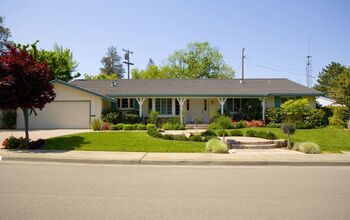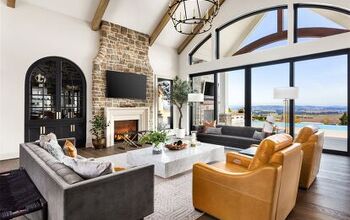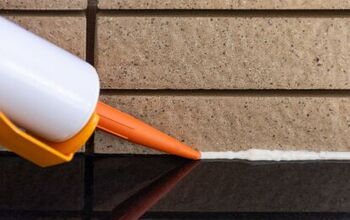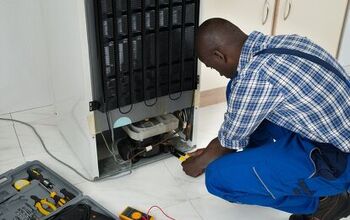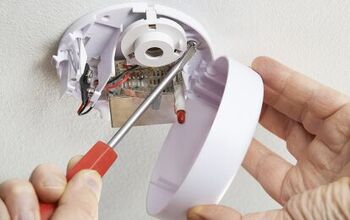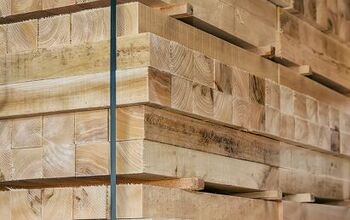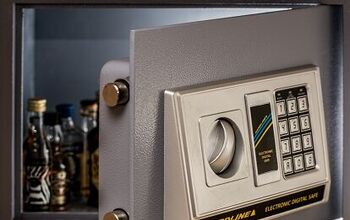What To Look For At An Open House

When you shop for a car, you take a test drive. When you’re looking for a new outfit, you try clothes on in the fitting room. And when you’re house-hunting, you check out open houses. An open house gives you a chance to see how a home fits you and your lifestyle, but it only works if you know what to look for.
Assess the home and the neighborhood during an open house, paying attention to traffic and noise levels and the exteriors of other homes. Curb appeal is important but look beyond cosmetics at the roof line and foundation. Observe the flow of the home, look inside closets and cabinets, test plumbing and electrical, and talk to the agent.
Don’t let a home’s staging or first impression cloud your judgment at an open house. Use the opportunity to dig deeper and get a clear picture of whether or not the home is a good fit.
A Buyer’s Checklist For An Open House
Before you attend open houses, use this article to create a checklist that you can bring with you. You’ll have a written reminder of what to keep an eye out for, so nothing falls through the cracks and you can also use it as a log to compare multiple homes.
When you view homes, it’s easy to get swept up in the excitement and emotion of the process, especially when you see a stunning property. However, this also makes it easy to forget to look at certain things, like inside the pantry to check storage space. This list will help you stay on track and maintain your focus, so you don’t miss a beat.
1. Get A Feel For The Neighborhood
When you buy a house, you also purchase the neighborhood, so don’t ignore it. When you’re attending the open house, pay attention to what’s happening outside, too.
How are the noise and traffic levels? What’s the school district like? How do the neighbors maintain their homes? Also, consider things like what your commute time would be and accessibility to things like grocery stores and other essentials.
2. Exterior Condition Of The Property
Curb appeal is important, but look beyond the pretty stuff, like flowers, a freshly painted front door, and new light fixtures. Assess the condition of the home by looking for sagging in the roofline or damage.
Check out the foundation. Do you see any cracks or crumbling? In what condition is the front porch, the walkway or driveway?
Are there loose shutters or wobbly light fixtures? These types of things could signal larger problems at worst, and at the least, indicate that the sellers don’t prioritize repairs and maintenance.
3. The Overall Flow And Layout Of A Home
Some people love the idea of an open-concept floor plan, but others prefer separate rooms. Therefore, one floor plan isn’t necessarily better than another, so it depends on you.
Make sure the layout of the home works with your preferences and lifestyle because changing a layout isn’t a quick-and-easy fix (nor an inexpensive one). Walk through the home and see how it feels and flows.
Think about whether your furniture fits (unless you plan to get new pieces). Consider how you would use the various rooms in the home and see if the layout makes it work. Evaluate the room sizes, natural light, and any special features.
4. Signs Of Deferred Maintenance
Spotting signs of deferred maintenance is a critical task during an open house because it’s how you can find potential red flags. If you spot things like grimy grout, loose tiles, burnt-out light bulbs, or peeling paint, they might seem like minor cosmetic fixes.
However, these seemingly small problems provide valuable clues about how the sellers care for the property. If they don’t bother with regular cleaning or small repairs, they also might not take care of routine maintenance either, like regular HVAC servicing. There’s also a heightened chance that they left major problems unaddressed, leading to even more complications in the future.
5. Potential Structural Issues
Cracks and discoloration in walls and ceilings could point to structural issues or water damage. Do certain walls seem uneven? Is there any separation between the ceiling and the wall?
Are the floors level? Are there soft spots? Bring a small ball or marble with you and place it on a floor you suspect to be uneven. If the marble rolls to one side, you have your answer.
Try opening windows and doors. If they don’t open smoothly, or doors swing closed on their own, these factors could also mean problems with the house’s structure.
6. Test Important Systems
Don’t hold back when it comes to turning lights off and on, flushing toilets, and testing taps. These are all understandable actions that buyers perform to test out the goods.
It’s how you can identify potential problems with plumbing or electrical systems in the house. Also, stay attuned to things like flickering lights, drippy faucets, poor drainage, and water pressure.
Look under sinks for signs of leaks or water damage. Are there enough outlets in the home? Where are they located? Do any light fixtures or outlets seem loose?
Do rooms feel stuffy or are some rooms hotter or colder than others? This could indicate ventilation or insulation problems. Make a note of how many vents there are and their locations.
7. Assess Storage Space
A common complaint people have about their homes is that they don’t have enough storage. Sometimes, the problem is more about overconsumption and too much stuff, signaling a need to declutter your house.
However, often it could very well be an insufficient amount of space for your needs. When you’re at an open house, open cabinets and closets to see how much space there is inside.
Check out the attic, basement, garage, or any other designated storage area. Think about your items and how they would fit into these spaces.
8. Check The Backyard
Don’t just look out a window to see the backyard. Go outside and walk around it. How’s the drainage? Is there a fence? If so, does it provide adequate privacy and security?
Are there any landscaping issues? If there’s a deck or patio, what’s the condition? Is the size of the yard what you’re looking for or is it too much to maintain? Is it noisy? How close are you to the neighbors’ houses?
9. Take Note Of Locked Doors
If you’re considering purchasing a home, you should get to see every inch of it. A locked door or blocked-off room is a major red flag. If there’s a room or area you can’t access, ask the agent why.
10. Talk To The Agent
Take a few minutes to speak with the agent or host and ask them about any known issues or repairs with the property. Ask about the HVAC maintenance, the age of the roof, and other large elements, like windows or the water heater.
Ask about things like the average cost of utilities and property taxes. Have there been any other offers or price reductions on the property?
11. Take Pictures (If It’s Allowed)
Take pictures of the house, including any potential issues, so you can use them as a reminder later. These images will be helpful to use as comparisons as you see other properties. (Ask the agent first if you’re allowed to take pictures.)
Things You Shouldn’t Do At An Open House
Now that you have a checklist of the things you should do at an open house, it’s important to know what you shouldn’t do. You want to observe proper open house etiquette when touring homes, not only to be respectful, but also, to leave a favorable impression on the host.
- If the open house requires scheduled viewings, don’t show up unannounced.
- Don’t go through the homeowner’s personal belongings. (Opening closets and cabinets is a yes, but opening dressers, jewelry boxes, etc., is a no-no.)
- Avoid taking pictures without asking permission.
- Don’t criticize the property while you’re touring. Some sellers set up cameras or recording devices, and that won’t work in your favor.
- Don’t tour the home with a large group — it gets overwhelming.
- Do not bring pets with you.
- Don’t let children roam around the home on their own.
- Avoid lingering or going over your scheduled appointment time.
- Do not use the bathroom while you’re at an open house unless it’s vacant or you’re genuinely interested in the home. (If you do, make sure the water service is turned on!)
- Avoid handling personal belongings, sitting on furniture, etc.
- Don’t ask the agent inappropriate questions, like the seller’s motivation for listing or their financial situation.
Be Prepared When You Attend Open Houses
Maximize the time you spend at every open house by knowing what to look for and what to avoid. The open house is your chance to look beyond the surface details of a property with a critical eye.
The perfect home isn’t all about the looks. It’s also about functionality, good bones, and how well it fits your lifestyle. These are the benchmarks you want to use when evaluating houses. If you adore a property as soon as you walk through the door, that’s fine, but remember to keep an open mind and follow your head over your heart.
Related Guides:

Stacy Randall is a wife, mother, and freelance writer from NOLA that has always had a love for DIY projects, home organization, and making spaces beautiful. Together with her husband, she has been spending the last several years lovingly renovating her grandparent's former home, making it their own and learning a lot about life along the way.
More by Stacy Randall










